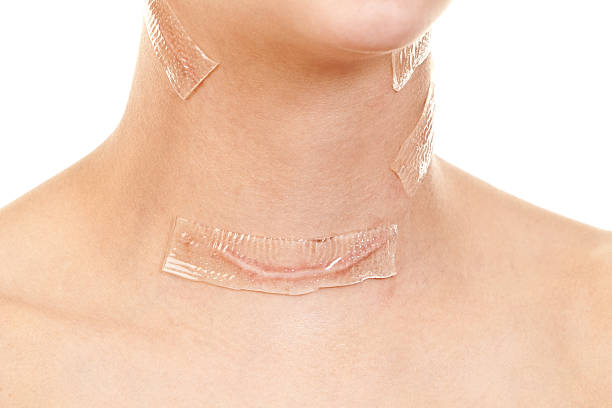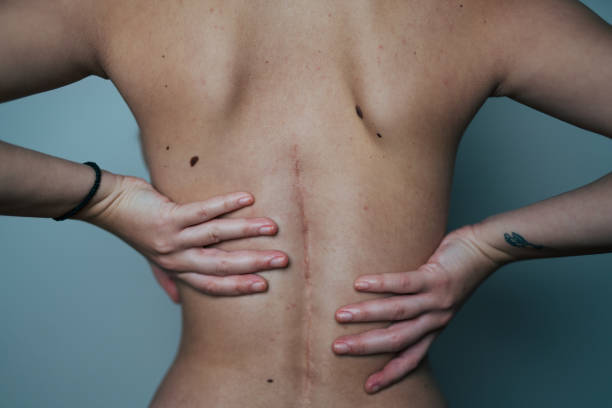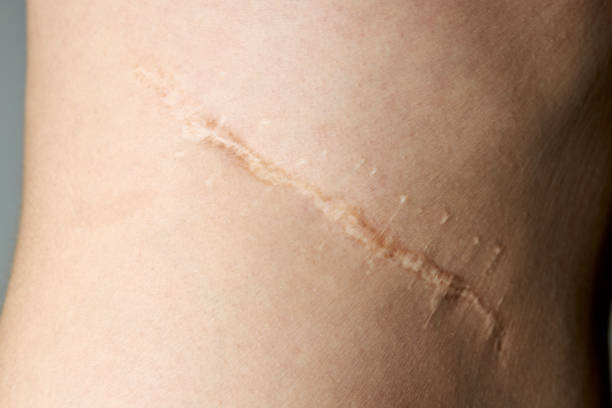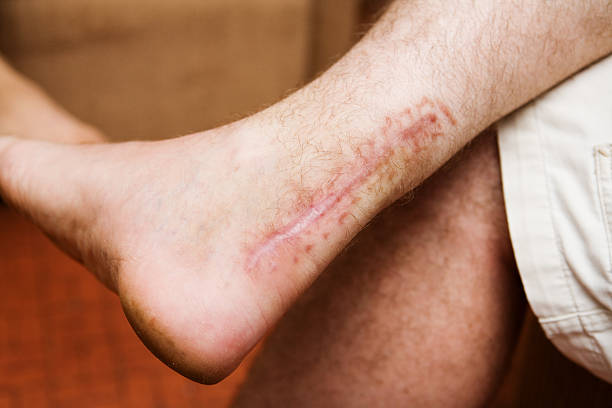Scar Revision Surgery in Bangalore – 2025

Introduction
Everyone has scars. They may be small marks from childhood injuries, acne pits from teenage years, or larger reminders of surgeries and accidents. A scar is more than just a visible line on the skin; it represents the body’s natural attempt to heal itself. While some scars fade and become less noticeable over time, others remain prominent, raised, or darker than the surrounding skin.
At Vitalsklinic in Bangalore, we see many patients who come not only for the physical correction of scars but also for the emotional relief that comes with improved appearance. To better understand how scars develop and how they can be treated, let’s dive deeper into the science and impact of scarring.
What is a Scar?
A scar is a mark left on the skin after an injury heals. When the deeper layers of the skin (the dermis) are damaged, the body rushes to repair the wound by producing new collagen fibers. This process seals the wound quickly but does not recreate the exact texture and tone of the original skin. As a result, the repaired area looks different in color, shape, and surface compared to the surrounding skin.
Scars may appear:
-
Raised (hypertrophic or keloid scars)
-
Depressed or pitted (atrophic scars like acne scars)
-
Flat but darker or lighter than nearby skin
The appearance of a scar depends on several factors such as skin type, depth of injury, and healing conditions.
How Do Scars Form? The Biology of Healing
When the skin is injured, the body goes through a multi-phase healing process:
-
Inflammatory Phase (0–7 days): The body reacts to injury by sending white blood cells to fight infection and remove debris. The area may look red, swollen, and painful.
-
Proliferative Phase (1–6 weeks): Fibroblast cells produce collagen to close the wound. This forms a temporary tissue scaffold.
-
Maturation Phase (6 weeks–1 year or more): Collagen remodeling takes place. The wound becomes stronger, but the new tissue has a different structure from normal skin, leaving behind a scar.
Unlike uninjured skin, scar tissue lacks hair follicles, sweat glands, and the same elasticity. This makes scars more noticeable.
Types of Scars
Not all scars are the same. At Vitalsklinic, we classify scars into different categories because each requires a unique approach to treatment.
1. Atrophic Scars
These are sunken or pitted scars caused by tissue loss. Common examples include acne scars and chickenpox scars. They appear as small depressions in the skin.
2. Hypertrophic Scars
These scars are raised and thick, but they remain confined to the original wound site. They are often red or pink and may improve over time.
3. Keloid Scars
Keloids are overgrown scars that extend beyond the original injury site. They occur when the body produces too much collagen. Keloids may be itchy, painful, or cosmetically distressing.
4. Contracture Scars
Often seen after burns, contracture scars tighten the skin and may limit movement in severe cases. They occur because the skin shrinks as it heals.
5. Flat Scars
These scars may look like a dark or light patch, blending more smoothly with the skin surface but still different in color and tone.
Factors That Influence Scar Formation
Not every wound turns into a prominent scar. The visibility and severity of scars depend on:
-
Depth of injury: Deeper wounds cause more collagen production, leaving noticeable scars.
-
Skin type and color: Darker skin tones may develop thicker scars or pigmentation.
-
Age: Younger people tend to produce stronger scars due to more active collagen production.
-
Genetics: Some people are more prone to keloids.
-
Location on the body: Scars on joints or high-tension areas are often worse.
-
Wound care: Proper cleaning, stitching, and aftercare can minimize scarring.
Physical and Emotional Impact of Scars
Scars are not just cosmetic concerns. They may:
-
Cause physical discomfort (itching, pain, tightness)
-
Restrict movement (in cases of contracture scars)
-
Affect confidence and self-image
-
Lead to psychological distress (especially facial scars)
At Vitalsklinic, we understand that treating scars is not only about skin correction but also about emotional healing. Many patients report improved self-esteem and quality of life after undergoing scar treatments.
Can Scars Heal Completely?
The truth is: scars cannot be erased completely, but they can be made much less visible. With the right treatments, scars can flatten, fade, and blend naturally with surrounding skin.
Medical Treatments for Scars
At Vitalsklinic in Bangalore, we provide advanced scar revision treatments tailored to each patient’s needs. These include:
1. Laser Therapy
Fractional CO2 and other advanced lasers reduce scar thickness, smoothen texture, and promote collagen remodeling.
2. Microneedling with PRP
Tiny controlled injuries stimulate natural healing, while platelet-rich plasma accelerates regeneration, improving scar appearance.
3. Chemical Peels
These help lighten pigmentation and improve the surface of shallow scars.
4. Dermabrasion
A resurfacing technique that removes damaged upper skin layers, revealing smoother skin.
5. Steroid Injections
Particularly effective for raised scars and keloids, helping to flatten and soften them.
6. Surgical Scar Revision
For severe cases, scars can be surgically excised or repositioned to make them less visible.
Who Can Undergo Scar Revision Treatment?
Not every scar requires medical intervention, but many people choose scar revision treatment when scars affect their confidence, appearance, or daily comfort. At Vitalsklinic in Bangalore, our dermatologists carefully assess each patient to determine if they are the right candidate for treatment.
Ideal Candidates for Scar Revision
You may be suitable for scar revision if:
-
You have visible scars that are affecting your self-image, such as acne scars, surgical scars, or burn scars.
-
Your scar is fully healed and mature. Fresh wounds need time to heal before they can be treated. Usually, scars are considered mature after 6–12 months.
-
You are in good overall health. People with uncontrolled medical conditions (like diabetes or bleeding disorders) may need special care.
-
You have realistic expectations. Scar treatments improve appearance significantly but may not erase the scar completely.
-
You are emotionally ready. Many patients feel relief and improved confidence after treatment, but it’s important to have a positive outlook and patience with results.
-
You’ve tried home remedies without success. If creams, oils, or DIY solutions have not worked, professional treatment is the next step.
Who May Need Extra Caution
Some patients may need a detailed evaluation before undergoing scar revision:
-
Those with a history of keloids (since scars may recur).
-
People with skin infections or other untreated skin conditions in the treatment area.
-
Individuals with unrealistic expectations, expecting scars to vanish completely.
Age Considerations
-
Adults and teenagers can undergo treatment once the scar has matured.
-
Children may also receive treatment in special cases, but only after careful dermatologist evaluation.
In summary: Anyone with scars that affect their appearance, movement, or confidence may undergo scar revision at Vitalsklinic, provided they are healthy and have realistic expectations.
Treatment Procedure for Scar Revision at Vitalsklinic
At Vitalsklinic in Bangalore, every scar revision treatment is personalized. No two scars are alike, and that’s why our dermatologists follow a systematic approach to ensure safe, effective, and long-lasting results. Here’s how the process works:
1. Initial Consultation and Assessment
The journey begins with a one-on-one consultation with our experienced dermatologist. During this session:
-
The scar’s type, size, depth, and location are carefully examined.
-
Your medical history is reviewed to ensure safety.
-
Photographs may be taken for before-and-after comparison.
-
A custom treatment plan is designed based on your skin type, scar maturity, and desired outcomes.
2. Pre-Treatment Preparation
Before starting the procedure:
-
The treatment area is cleansed and disinfected.
-
A topical numbing cream or local anesthesia may be applied to ensure comfort.
-
Patients are given pre-procedure instructions, such as avoiding blood-thinning medications or direct sun exposure.
3. Scar Revision Techniques at Vitalsklinic
Depending on the scar, our specialists may use one or a combination of the following techniques:
-
Laser Therapy: Breaks down scar tissue and stimulates collagen production.
-
Microneedling with PRP: Improves texture and encourages natural skin healing.
-
Chemical Peels: Exfoliate damaged layers and improve pigmentation.
-
Dermal Fillers: Elevate recessed scars to match the surrounding skin.
-
Steroid Injections: Flatten raised scars like keloids and hypertrophic scars.
-
Surgical Scar Revision: For deep or complex scars, the scar is carefully excised and closed with precision.
4. Post-Treatment Care
After the procedure, patients receive clear instructions to ensure proper healing:
-
Soothing ointments and dressings may be applied.
-
Sun protection and gentle skincare are emphasized.
-
Follow-up appointments are scheduled to monitor progress.
5. Results and Recovery
-
Initial improvements are visible within a few weeks.
-
Final results may take 2–6 months, depending on the scar type and treatment method.
-
With consistent care, scars become less noticeable, smoother, and closer in color to the surrounding skin.
At Vitalsklinic, the goal of scar revision is not only to improve skin appearance but also to restore confidence. Each treatment is designed with precision, safety, and patient comfort in mind.
Conclusion
A scar is a natural result of the body’s healing process, but it does not have to define your appearance or confidence. With modern medical science, scars can be treated effectively to restore smoother and healthier skin.
At Vitalsklinic in Bangalore, our dermatologists specialize in scar treatments that are safe, advanced, and customized for every individual. Whether you are struggling with acne scars, burn scars, or surgical scars, we can help you take the first step toward clearer, confident skin.
FAQs
Are scars permanent?
Do all wounds leave scars?
Can scars come back after treatment?
Is scar treatment painful?
How long does it take to see results?
Request A Call Back
By clicking "Book Your Slot" you agree to our Terms and Conditions and privacy policy
Book Your SlotWhy choose us
- 24/7 availability for aftercare.
- The procedure is done by an experienced dermatologist (Dr. Harish Prasad) and his team of technicians.
- Our clientele includes actors, businessmen, politicians, models, and other celebrities from many fields.
Testimonials
"I had acne scars for more than 8 years and tried every cream available in the market. Nothing worked until I visited Vitalsklinic. The dermatologist explained everything in detail and suggested laser therapy combined with microneedling. After 3 sessions, I could already see a huge difference. Today, my skin is much smoother and my confidence is back. I’m truly grateful to the team."
Ramesh K., Bangalore
"I had a burn scar from childhood that always bothered me. Friends recommended Vitalsklinic, and I’m so glad I came here. The team suggested a combination treatment, and after multiple sessions, the scar has almost disappeared. The results are beyond my expectations!"
Arjun S., Koramangala
"Scar revision at Vitalsklinic has been a life-changing experience for me. I used to avoid social gatherings because of my visible acne scars. After completing the treatment plan, my skin looks healthier and brighter. Now, I feel more confident meeting people and even in my workplace."
Naveen R., Electronic City


